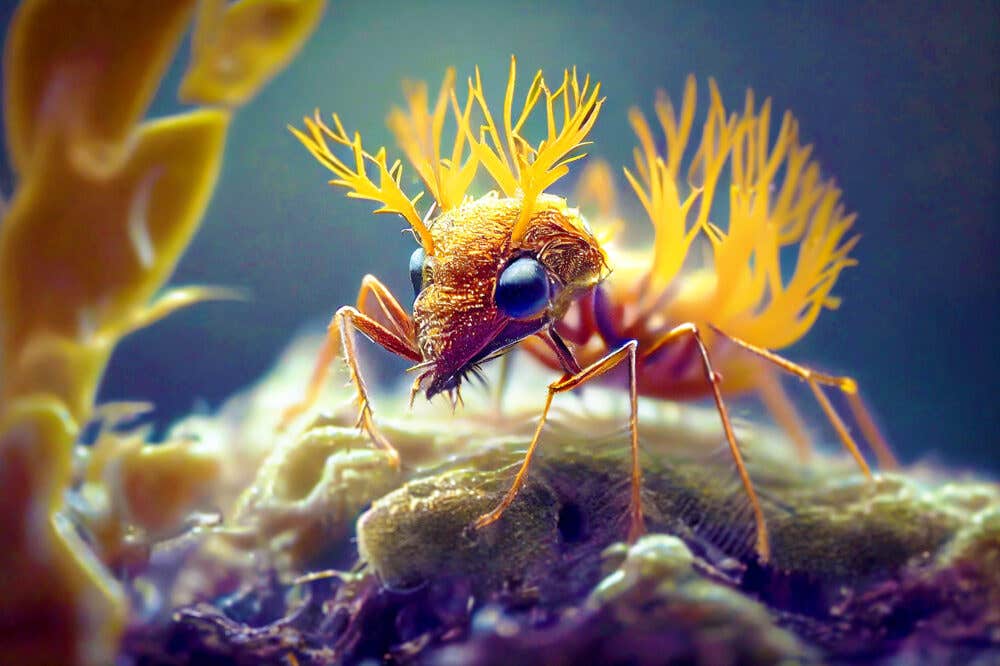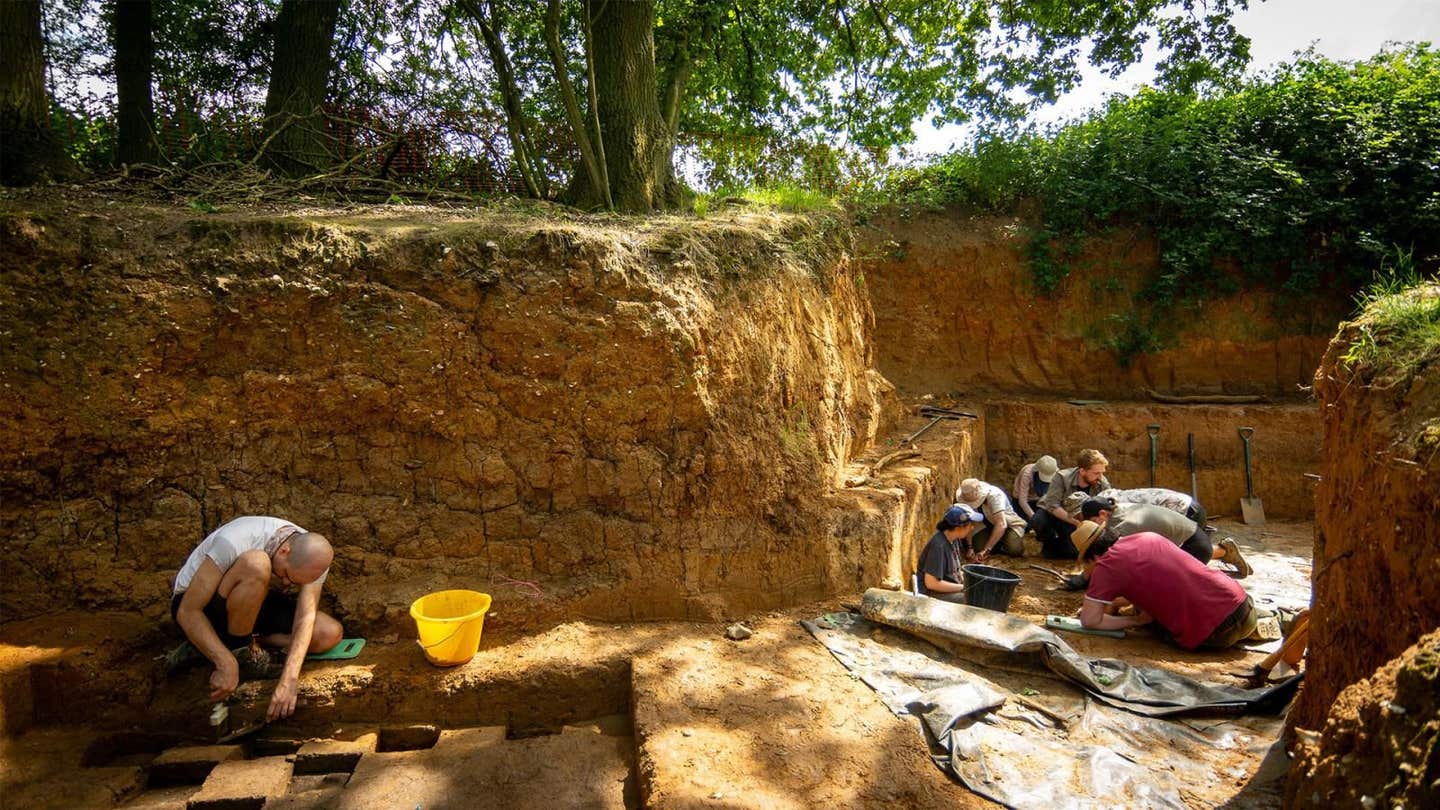Brain-altering parasite turns ants into zombies
It’s a scene that could be straight out of a horror movie: awakening atop a blade of grass, jaws clenched in an unnatural grip

[Sept. 22, 2023: Staff Writer, The Brighter Side of News]
It’s a scene that could be straight out of a horror movie: awakening atop a blade of grass, jaws clenched in an unnatural grip. (CREDIT: Creative Commons)
It’s a scene that could be straight out of a horror movie: awakening atop a blade of grass, jaws clenched in an unnatural grip, with no recollection of how you arrived there. Such is the chilling reality for ants that fall prey to the lancet liver fluke—a minuscule parasitic flatworm.
These liver flukes lead an astonishingly intricate life, one that commences with a nearly diabolical act: taking control of the ant's mind.
A Complex Life Cycle Revealed
Before delving into the sophisticated relationship between the parasite and its host, it's essential to appreciate the journey of the liver fluke. The life cycle of this parasite is nothing short of remarkable:
The Zombie Ant: In a terrifying phenomenon, an infected ant’s brain is commandeered, leading it to fasten onto a blade of grass—essentially becoming bait for grazers like cattle or deer. Yet, only one fluke infiltrates the brain. A multitude, hidden within a capsule in the ant’s abdomen, await their turn for transmission.
Related Stories
The Grazer's Predicament: As grazers feed on the grass, they inadvertently ingest these zombie ants. While the brain-controlling fluke meets its end in the grazer's stomach acid, the others survive, shielded by their protective capsules. Once in the grazer's intestine, they make their perilous journey through the bile ducts to the liver, maturing and laying eggs that are then excreted.
The Snail's Unfortunate Meal: These excreted fluke eggs lie in ambush, waiting for unsuspecting snails. Once consumed, the eggs morph into larval flukes that reproduce asexually, multiplying exponentially.
The Slimy Trap: In a brilliant escape plan, these larval flukes trigger the snail to cough, ejecting them within a mucus ball. This mucus attracts ants, which, upon ingestion, restarts this sinister cycle.
Dissected ant and where you can see the encapsulated parasites (white oval structures) spilling out of the hind body. (CREDIT: Brian Lund Fredensborg)
This gruesome and convoluted lifecycle was recently explored in-depth by researchers from the University of Copenhagen’s Department of Plant and Environmental Sciences.
A Parasite's Intricate Strategy
While the manipulation of ants to ascend grass blades was known, new revelations show the liver fluke's strategies are even more shrewd. "Getting the ants high up in the grass during cooler hours for grazers, then down again to avoid sun’s rays, reveals a parasite more advanced than we initially believed," says Associate Professor Brian Lund Fredensborg.
The unsuspecting ant climbs up and clamps its powerful jaws onto the top of a blade of grass, making it more likely to be eaten by grazers such as cattle and deer. (CREDIT: University of Copenhagen)
Working alongside Simone Nordstrand Gasque, a former graduate now at Wageningen University in the Netherlands, Fredensborg embarked on an innovative study—tagging hundreds of infected ants in the Bidstrup Forests near Roskilde, Denmark.
Gluing color-coded numbers to ants might sound humorous, but it paved the way for observing their behavior in response to various factors. "Temperature significantly affected ant behavior. Lower temperatures saw them attached to grass tops. As it warmed, they retreated," Fredensborg notes, humorously labeling it the ants’ "zombie switch."
The researchers tagged several hundred infected ants in the Bidstrup Forests near Roskilde, Denmark. (CREDIT: University of Copenhagen)
Sacrifice and Survival
Intriguingly, while hundreds of liver flukes infest an ant, only one ventures to the brain, steering its behavior. The remaining parasites nestle in the ant’s abdomen. “This lone fluke sacrifices itself for the others,” Fredensborg muses, highlighting nature's relentless cycle of sacrifice for species survival.
Beyond the ant, grazers play unwilling hosts, often facing liver damage as flukes journey within their organs.
This tale sheds light on a broader phenomenon—parasites manipulating host behavior. While historically overlooked, these brain-hijacking parasites significantly impact food chains. "They determine who eats whom in nature. Understanding their role is crucial," Fredensborg emphasizes.
Associate Professor Brian Lund Fredensborg. (CREDIT: University of Copenhagen)
Despite being widespread in regions like Denmark, mysteries about the liver fluke remain. "We now recognize temperature as a factor for brain takeover, but the chemical concoction used remains a puzzle," concludes Fredensborg.
This riveting research, recently featured in Behavioral Ecology, reminds us of nature's marvels and mysteries. As the tale of the lancet liver fluke unfolds, one thing is clear: the microscopic world holds tales of manipulation, survival, and intrigue that can dwarf even our most imaginative stories.
For more science and technology news stories check out our New Discoveries section at The Brighter Side of News.
Note: Materials provided above by The Brighter Side of News. Content may be edited for style and length.
Like these kind of feel good stories? Get the Brighter Side of News' newsletter.



